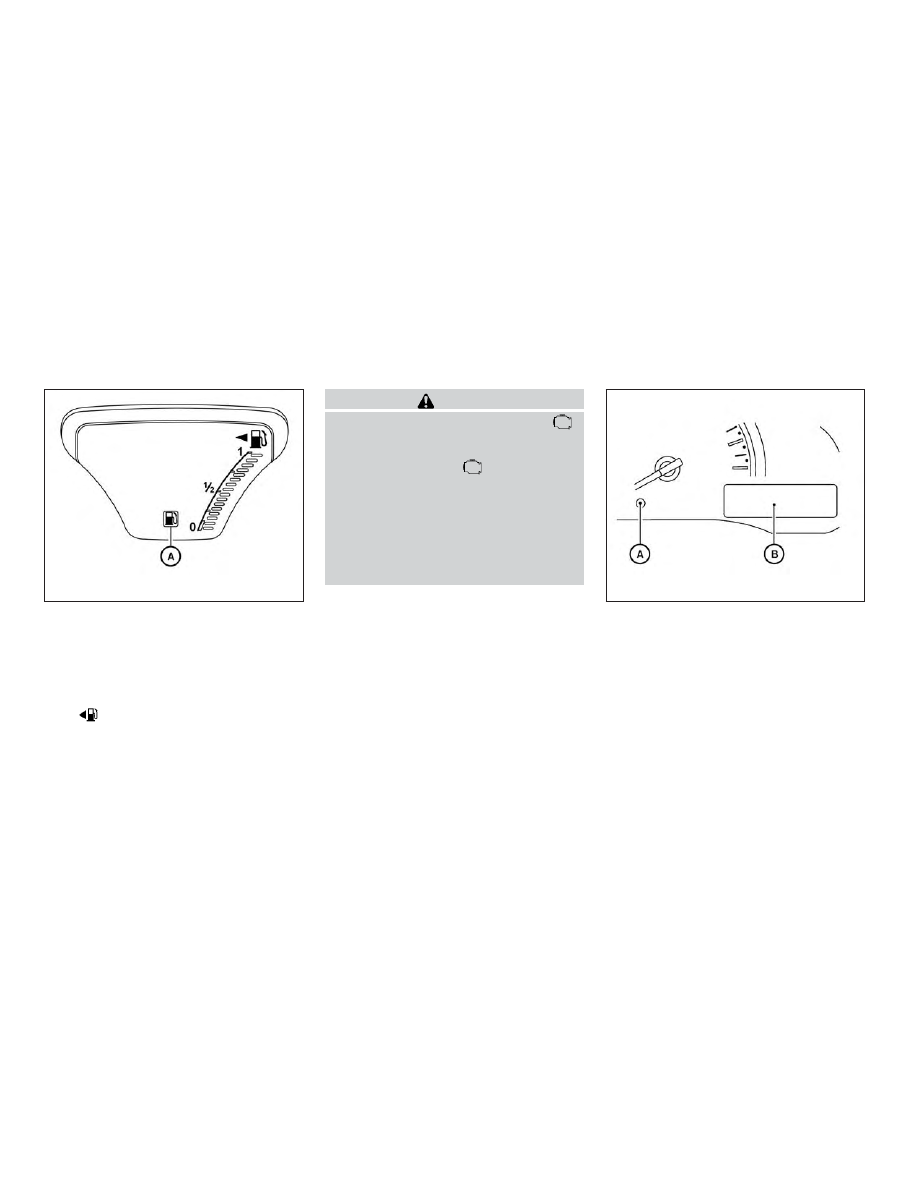Nissan Versa (2019 year). Instruction - part 6

Type B (if so equipped): The low fuel warn-
ing light
䊊
A
will turn on when the amount of
fuel in the tank is getting low.
Refill the fuel tank before the gauge reg-
isters 0 (Empty).
The
indicates that the fuel-filler
door is located on the driver’s side of the
vehicle.
CAUTION
∙ If the vehicle runs out of fuel, the
check engine light may come on. Re-
fuel as soon as possible. After a few
driving trips, the
light should
turn off. If the light remains on after a
few driving trips, have the vehicle in-
spected. It is recommended that you
visit a NISSAN dealer for this service.
∙ For additional information, refer to
“Malfunction Indicator Light (MIL)” in
this section.
TRIP COMPUTER
When the ignition switch is placed in the ON
position, modes of the trip computer can
be selected by pushing the change/reset
button
䊊
A
on the instrument panel located
near
the
speedometer. The
following
modes can be selected in the display
䊊
B
:
∙ Odometer
∙ Trip A
∙ Trip B
∙ Instant fuel consumption
∙ Average fuel consumption
Type B (if so equipped)
LIC2287
Type A (if so equipped)
LIC2470
2-10
Instruments and controls